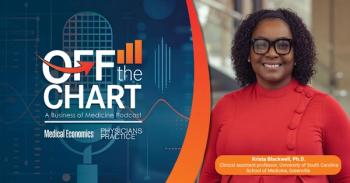
New wristband offers real-time insights for diabetes and heart health
Key Takeaways
- The wristband combines microneedle sampling, ultrasonic, and ECG sensors for real-time monitoring of glucose, alcohol, lactate, blood pressure, and heart rate.
- It offers a comprehensive health view, surpassing traditional glucose monitors by integrating metabolic and cardiovascular monitoring.
A flexible new wristband developed by engineers at the University of California San Diego could improve how people with diabetes manage their health by continuously monitoring glucose and key cardiovascular signals in real time.
A flexible new wristband developed by engineers at the University of California San Diego could improve how people with diabetes manage their health by continuously monitoring glucose and key cardiovascular signals in real time. The technology, published in
The device samples interstitial fluid beneath the skin using a replaceable microneedle array, allowing for real-time monitoring of glucose, alcohol, and lactate. Simultaneously, it uses an ultrasonic sensor to measure blood pressure and arterial stiffness, while ECG sensors track heart rate. These metrics offer a more comprehensive view of health than traditional glucose monitors alone.
“Comprehensive and effective management of diabetes requires more than just a single glucose reading,” said An-Yi Chang, co-first author and postdoctoral researcher in the Aiiso Yufeng Li Family Department of Chemical and Nano Engineering at UC San Diego. “By tracking glucose, lactate, alcohol and cardiovascular signals in real time, this pain-free wristband can help people better understand their health and enable early action to reduce diabetes risk.”
The project was a collaboration between the labs of professors Joseph Wang and Sheng Xu. Wang’s team focuses on chemical biomarker detection, while Xu’s group specializes in wearable ultrasound devices. Their joint effort created a platform that integrates metabolic and cardiovascular monitoring for round-the-clock insights.
The wristband’s readings have shown strong alignment with standard commercial devices, including glucose meters, breathalyzers and lactate monitors. Researchers plan to expand its functionality and eventually power it through sweat or sunlight while integrating AI to analyze personal health trends.
A new era in diabetes wearables
The UC San Diego wristband reflects a growing trend in the health care sector: next-generation
One of the biggest recent advancements is the ability to measure multiple biomarkers simultaneously. Traditional continuous glucose monitors have already transformed diabetes care, but their scope is limited to blood sugar. Adding alcohol and lactate levels provides important context about behavior, diet, and exertion, while cardiovascular indicators like arterial stiffness and blood pressure reveal longer-term health risks often invisible to glucose data alone.
What sets newer devices apart is the integration of sensors once thought too bulky or complex for
The use of artificial intelligence is also on the horizon. Future devices may analyze trends across thousands of data points collected every day, alerting users to early signs of heart disease, insulin resistance or poor recovery from exercise. Combined with telemedicine, these insights could help providers customize treatment or intervene before a crisis occurs.
As devices like UC San Diego’s wristband advance toward commercial viability, the healthcare sector is likely to see a surge in multi-sensor platforms that empower individuals to take more proactive roles in managing complex, chronic conditions like diabetes.
Newsletter
Stay informed and empowered with Medical Economics enewsletter, delivering expert insights, financial strategies, practice management tips and technology trends — tailored for today’s physicians.
















